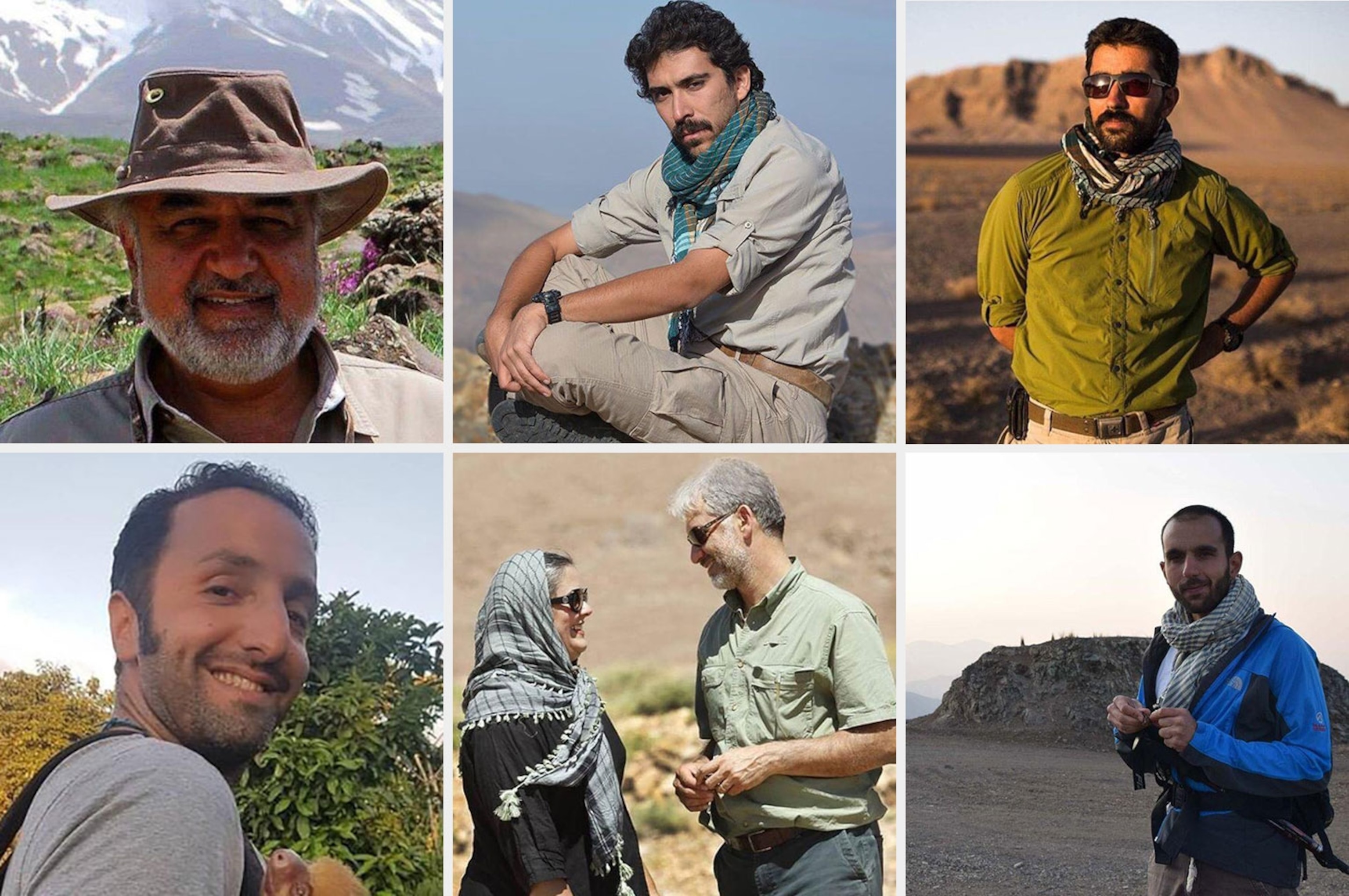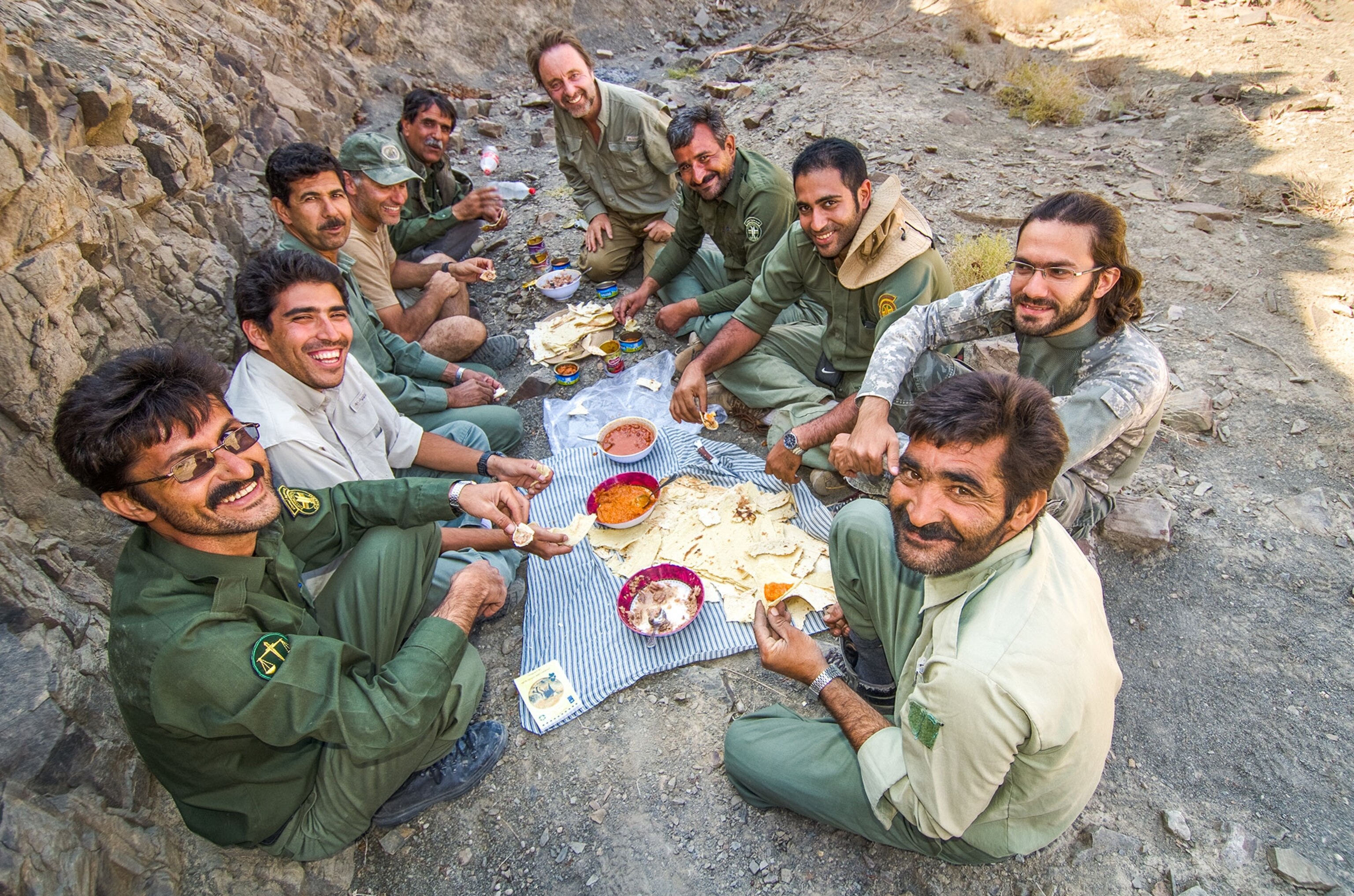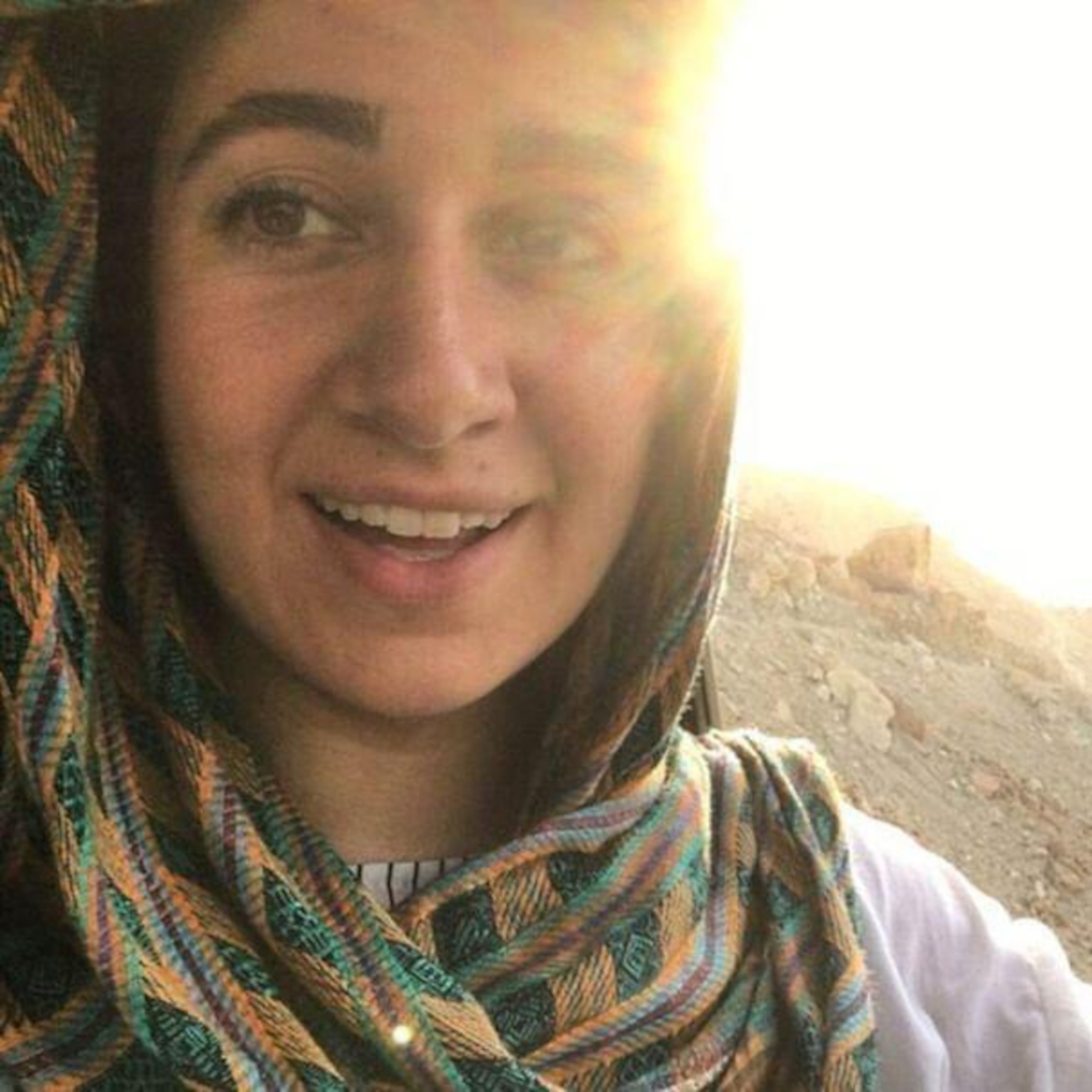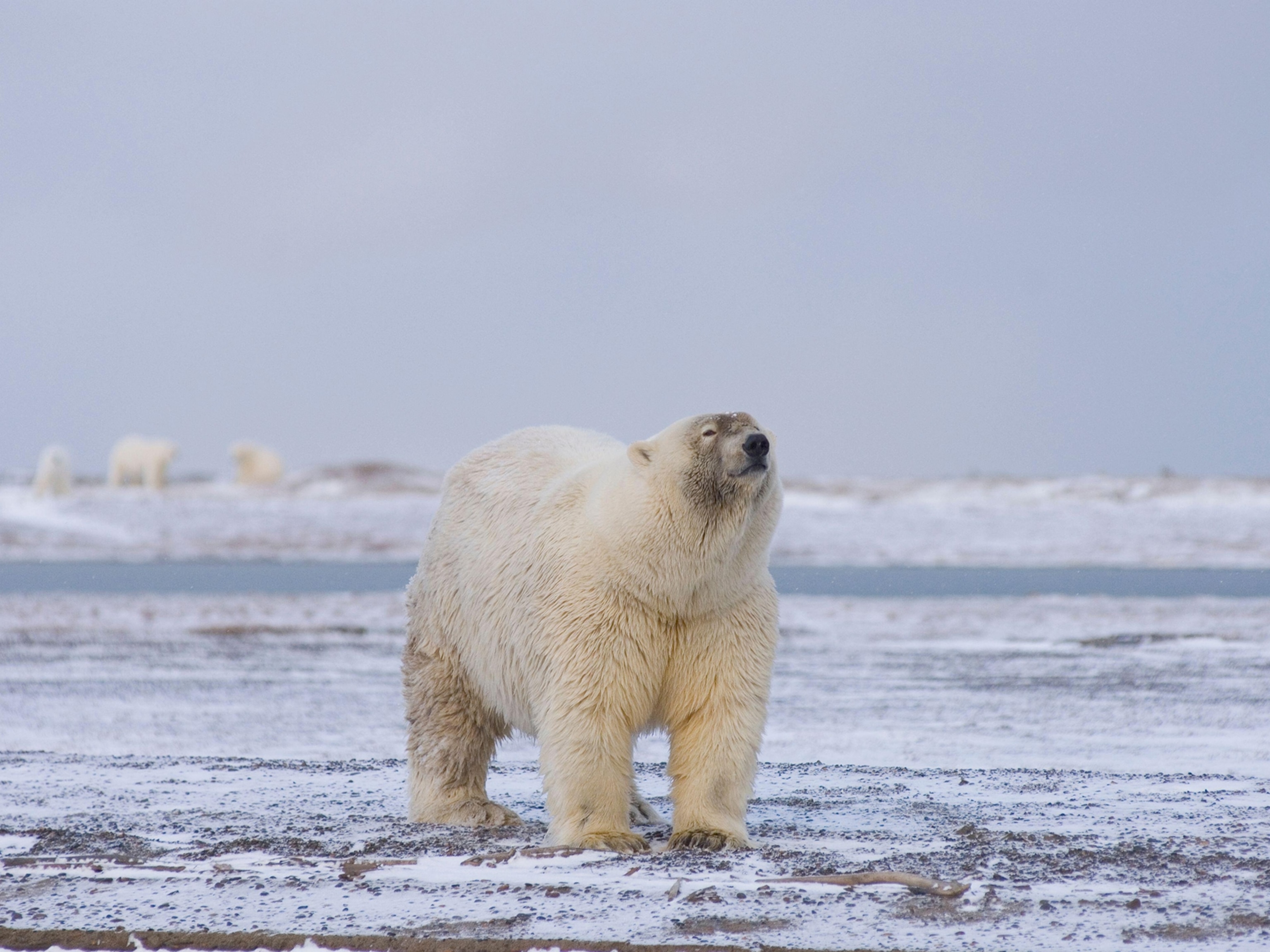
As the cases of eight conservation scientists and researchers in Iran enter a critical phase, prominent wildlife scientists and NGOs around the world continue to rally in support of the accused.
The conservationists, from the Tehran-based Persian Wildlife Heritage Foundation (PWHF), have been accused of using camera traps to spy—a claim being rebuffed on technical grounds by camera trap experts.
Those who know them paint a picture of a dedicated team of environmentalists, researchers, and scientists whose work to conserve critically endangered Asiatic cheetahs and other species has unwittingly been politicized, with tragic results.

In mid-January 2018, PWHF founder Morad Tahbaz was arrested. On January 24 and 25, eight others associated with the organization were also arrested: Managing Director Kavous Seyed-Emami, Niloufar Bayani, Houman Jowkar, Taher Ghadirian, Sepideh Kashani, Amir Hossein Khaleghi, Abdolreza Kouhpayeh, and Sam Radjabi. Amnesty International documented a broader crackdown on environmental activists, citing 63 arrests in 2018, based on media reports.

On February 9, Seyed-Emami’s wife Maryam Mombeini was summoned to Tehran’s Evin Prison for questioning, his son Mehran says. After several hours, she was told she could see her husband—or, rather, his body. Prison authorities told her he had committed suicide in prison. But his sons are calling for an independent investigation because the death took place out of sight of CCTV cameras, says his other son Ramin, who viewed the footage.
In fall 2018, the charges were announced. The London-based human rights organization Article 19 reports that Niloufar Bayani, Houman Jowkar, Taher Ghadirian and Morad Tahbaz have been charged with “corruption on Earth,” which can carry the death penalty. Sepideh Kashani, Amir Hossein Khaleghi, and Abdolreza Kouhpayeh are charged with espionage, and Sam Radjabi is facing the lesser charge of collusion related to espionage.
Their jailing has been met with a chorus of international condemnation, with the United Nations, Amnesty International, Human Rights Watch, Canadian Prime Minister Justin Trudeau, the International Union for the Conservation of Nature, Wildlife Conservation Society, World Wildlife Fund, 132 leading conservationists, and the European Parliament speaking out.
Founded in 2008, PWHF operates with the permission of the Iranian government and in close cooperation with the Department of Environment and enjoys long-running relationships with UN agencies, international NGOs, and grassroots conservation groups. It is primarily funded by in-country donors but receives technical assistance from international groups—standard procedure in the world of conservation.
‘ALARM AND CONSTERNATION’
International partnerships and scientific exchanges are commonplace in the tightly knit big cat research community, with organizations collaborating on projects in ways that transcend borders and politics. Those who know PWHF’s work say its success has been built on its apolitical and steadfast focus on conservation, one of its strengths being the solid relationships it built with both Iranian government agencies and international groups. That’s why the arrests of PWHF staff and associates shocked the international conservation community.
You can only capture low-resolution images of animals passing by at close range [with these camera traps]. That is what they are designed for, and you cannot do anything else with them even if you wanted to.”Frans Lanting, National Geographic photographer
A letter seen by National Geographic sheds new light on how PWHF staff became concerned with their cheetah conservation work getting derailed by politics in the months before the arrests.
The letter, dated October 17, 2017, was addressed to then chief conservation officer Luke Hunter at the big cat conservation organization Panthera, which occasionally provided technical assistance and sent experts to Iran to work with PWHF as part of the Conservation of Asiatic Cheetah and Its Habitat Project (CACP), funded by the UN and Iran’s Department of the Environment.
It voiced “alarm and consternation” regarding comments critical of Iran made by Panthera chair and co-founder Thomas Kaplan, a billionaire investor, businessman, and philanthropist. The previous month, Kaplan had spoken at the summit for United Against Nuclear Iran (UANI), the lobby group he helps fund and which counts among its board former members of U.S. and Israeli intelligence services. Although Kaplan was not speaking in his capacity as Panthera chair, the letter suggests the Iranian researchers were worried that being associated with an organization linked to someone publicly criticizing Iran could be problematic for them.
UANI advocates “the economic and diplomatic isolation of the Iranian regime in order to compel Iran to abandon its illegal nuclear weapons program, support for terrorism, and human rights violations,” according to its website. This summit was the first public show of Kaplan’s support for UANI.
PWHF’s letter stated that maintaining even minimal cooperation with Panthera had become “questionable” as a result of Kaplan’s comments and that it was unfortunate "to see personal politics have a negative impact on conservation."
The letter stated: "His allegations about our country are absolutely baseless, and his statements are insulting to our country and its people."
Hunter declined to comment to National Geographic about the letter. Former Panthera employee Tanya Rosen, a National Geographic Explorer, confirmed the veracity of the letter. She says she learned about its existence from Panthera president and CEO Frédéric Launay at a meeting in New York near the end of February 2018 and of the specific details of its contents in the fall of that year.
Though Hunter declined to comment on the letter to Panthera, he relayed more general comments via email:
"The people being held are among the most knowledgeable, experienced, and capable conservationists working in Iran,” he says. “They undertook excellent surveys for cheetahs, and thanks to them, our understanding of this critically endangered population is much richer. I am convinced of their innocence."
Panthera and Kaplan did not respond to multiple requests for comment by the time of publication.
CHEETAH RESEARCH
In recent years, cheetah conservation groups have worked to build awareness in Iran about the plight of the subspecies of cheetah known as the Iranian or Asiatic cheetah (Acinonyx jubatus venaticus). With fewer than 50 believed to be left in the wild, all in Iran, this cheetah is one of the most imperiled cats on Earth. It has long been hunted as a trophy species, and cheetah-human encounters remain an issue for remote communities. Iran’s Department of Environment, the UN, PWHF, and others have been working to elevate the cheetah’s profile.

Even Iran’s national soccer team got involved. PWHF helped devise a plan with the Conservation of Asiatic Cheetah Project that saw the team take to the pitch in the 2014 World Cup with cheetahs emblazoned on their jerseys—a move that required a special exemption to FIFA rules, issued in recognition of the importance of the Asiatic cheetah’s conservation.

Understanding the remaining population of a species like the Asiatic cheetah necessitates the use of camera traps. It’s standard practice in the field of wildlife research to place knee-high camera traps along game trails within a species’ home range, leaving them for months and sometimes years at a time. Typically, these devices have motion sensors and only trigger if something passes within the effective range—which is usually no more than 10 to 15 feet. They do not transmit data. By night, seen from about 15 feet, the cheetah appears spectral. By day, the image quality is improved, but only in the near distance. These images provide vital information that allows researchers to identify individual animals from their spots, observe the condition of animals, and take a rough census of a human-shy creature.

Wildlife photographer Frans Lanting visited Iran in 2011 and 2012 on assignment for National Geographic and worked with game wardens and scientists, including several of those on trial, to set up camera traps to capture images of Iran’s critically endangered cheetahs.
In comments emailed to National Geographic, he emphasizes that the simple camera traps PWHF uses in its work are only good for one thing—wildlife research.
“You can only capture low-resolution images of animals passing by at close range,” says Lanting, who’s been working with camera traps for three decades. “That is what they are designed for, and you cannot do anything else with them even if you wanted to.”
Furthermore, he says, setting up camera traps requires governmental approval—a lengthy and bureaucratic process that was possible because of the longstanding relationship PWHF had with Iran’s Department of Environment.
“This is a horrible situation for the people who have been wrongfully accused,” Lanting says. “It is also a tragedy for the Asiatic cheetah which is teetering on the edge of extinction. This situation could turn out to become a death sentence for the species and if that happens everyone in Iran will lose.”
‘A LOVE FOR NATURE THAT’S CONTAGIOUS’
In interviews, the researchers’ families, friends, and colleagues all emphasize their dedication to Iran’s wildlife and wild places.
Niloufar Bayani, educated in Canada and the U.S. in the field of conservation biology, is among those who face the charge of “corruption on Earth.” She worked for the UN’s Environment Program from 2012 to 2017, traveling around the world, but decided to return to Iran to work with PWHF in 2017.
“She was determined to return to Iran. She cared deeply about her country and wanted to make a difference through her conservation work,” says Mike Moser, an ecosystem management specialist who has been supporting conservation projects in Iran since 1999 as a consultant for the UN and other organizations.

A source close to Bayani, who requested anonymity because of the sensitivity of the situation, testifies to her passion for her work: “Many people jokingly mention that their first time really looking at an insect or touching one was because of Niloufar. She spreads a love for nature that is contagious…. Her interest in conserving at-risk species reflects a moral compass that she followed closely: She cared about the universe and everything that was in it.”
Of the scant details that have emerged from the closed-court proceedings, Bayani’s defiant testimony about mistreatment and forced confessions has struck those who know her as a characteristically courageous act.
Moser also worked closely alongside Taher Ghadirian, PWHF’s consultant on large mammals from 2014 to 2017, whom he describes as “undoubtedly one of the best ecologists in Iran.” Ghadirian did population surveys of leopards, wolves, and bears relying on camera traps and mammal signs (such as tracks and urine), and he worked with nomadic herders to help find solutions to confrontations between people and wildlife. He’s “a passionate conservationist, brilliant fieldworker and top-quality scientist,” Moser says.
“What strikes me about each of these individuals is their professionalism and their total commitment to environmental conservation in Iran. That is why the PWHF had earned such a strong reputation among scientists and conservationists,” Moser says.
BUT YOU’RE NOT HERE
Ama To Nisti [But You’re Not Here] is a song Ramin Seyed-Emami never should have had to write.
The lyrics, translated here from Farsi, speak of loss: “It's the first time / that alone / In the mountains / I stroll // It's the first time / the spring water runs pure / my eyes are fixed on the trail / but you're not there.”

Ramin, who goes by Raam, is 37 and a musician. He wrote the song to memorialize his father, PWHF co-founder Kavous Seyed-Emami, who died in prison. The music video is like leafing through a family album, featuring decades worth of stills and footage, from a man laughing and holding a small rabbit, to a man and woman looking into the webcam, laughing, the familiar scene of parents speaking to their grown children over Skype.
Raam and his brother, 35-year-old psychology student Mehran, were born in Iran, have dual Iranian-Canadian citizenship, and had split their time between the two countries. On March 7, 2018, reeling from the death of their father, Raam and Mehran left Iran. Their mother Maryam Mombeini was prevented from leaving at the airport, but she implored them to go on without her, they tell National Geographic. She remains unable to leave Iran, despite also holding Canadian citizenship.
Mehran and Raam tell of a childhood spent outdoors, camping as many as 15 times a year. They describe their father as “an actual tree-hugging hippy” who would police the length of their showers and use of electricity in the home, who gave them Call of the Wild by Jack London, who would joke that the greatest high available to man is to stand atop a mountain, and who for decades would travel for miles to the nearest available source to fill up gallons of fresh spring water.
“His love for the outdoors spawned several generations of outdoor enthusiasts in Iran. There are not many people in Iran who go camping and don’t know my father. There wasn’t a mountain, valley, lake or desert we hadn’t seen,” the brothers say. “He wanted nothing more than for the next generations to be able to enjoy Iran’s natural beauties and its wildlife the same way he did. That’s why he worked so hard his whole life to help preserve Iran’s environment and wildlife.”

Kavous Seyed-Emami’s work with PWHF was voluntary, his sons note, and he did it out of a sense of duty to his country. His full-time job, which he’d had for almost three decades, was as a sociology professor at Imam Sadiq University, a conservative institution in Tehran. He was known for being careful, risk-averse, and very sensitive to anything that would even remotely be considered political or dangerous.
“He was a patriot in the best sense of the word and Iran needed him badly,” Raam and Mehran say. “He may have left his body, but his soul radiates through every tree, every field, and every animal in our lands. He continues to inspire us, even today.”
For his family, closure remains elusive. The brothers hope to be reunited with their mother, so they can grieve together.
The future of the Asiatic cheetah hangs in the balance. So too do the lives of the scientists who sought to preserve them.







